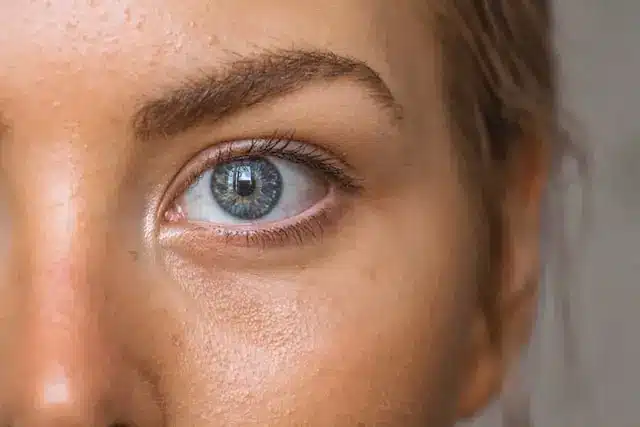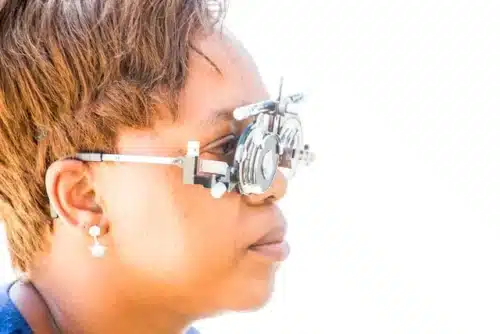
Everything You Must Know About Cataracts
The eye condition cataracts affects millions of people around the world. While they are primarily associated with aging, cataracts can impact individuals of all ages. Here is everything to know about cataracts, from their causes and symptoms to their diagnosis and treatment options.
Understanding Cataracts
Cataracts are a prevalent eye disorder characterized by the clouding of the eye’s natural lens. The lens, located just behind the iris, focuses light onto the retina, which then sends visual information to the brain. Normally, the lens is transparent, allowing clear vision. However, when cataracts develop, this transparency is compromised, leading to various visual impairments.
Types of Cataracts
Cataracts come in various forms, each with its unique characteristics:
- Age-related cataracts: These are the most common and typically develop with age. Over time, the proteins in the eye’s lens break down, leading to cloudiness and reduced vision.
- Congenital cataracts: This type is present at birth or develops in childhood due to genetic factors or prenatal infections.
- Secondary cataracts: These may develop as a result of other underlying medical conditions such as diabetes or the use of certain medications like corticosteroids.
- Traumatic cataracts: These cataracts occur after eye injuries or trauma. They can develop immediately or years after the injury.
- Radiation cataracts: Exposure to ionizing radiation, like that used in cancer treatment, can lead to radiation-induced cataracts.
- Subcapsular cataracts: These develop at the back of the lens and often affect individuals with diabetes and those taking high doses of steroids.
- Cortical cataracts: These appear as wedge-like opacities that start at the edge of the lens and work their way to the center.
Causes of Cataracts
While the primary cause of age-related cataracts is aging itself, there are several risk factors and contributing causes associated with the development of cataracts. These include:
- Ultraviolet radiation: Overexposure to UV radiation from the sun can increase the risk of cataracts.
- Smoking: The chemicals in tobacco can cause cataracts to form.
- Diabetes: High blood sugar levels can cause changes in the lens, leading to cataracts.
- Hypertension: High blood pressure has been associated with an increased risk of cataracts.
- Family history: Genetics can play a role, and if your family has a history of cataracts, you may be more susceptible.
- Eye injuries and inflammation: Trauma to the eye or chronic eye conditions like uveitis can increase the likelihood of cataract development.
- Excessive alcohol consumption: Prolonged and heavy alcohol use can contribute to cataracts.
- Steroid use: Long-term use of corticosteroids may lead to cataract formation.
Recognizing the Symptoms
Cataracts usually develop slowly and may not show noticeable symptoms in their early stages. As they progress, the following symptoms can become more evident:
- Blurry or cloudy vision: The most common and significant symptom of cataracts is a gradual loss of clear vision.
- Sensitivity to light: Individuals with cataracts often become more sensitive to light, which can make driving at night or even being in bright sunlight uncomfortable.
- Halos around lights: Glaring light sources, like car headlights at night, may appear surrounded by halos or rings.
- Color vision changes: Cataracts can distort your perception of colors, making them appear faded or yellowed.
- Double vision: Some people might have double vision in one eye.
- Frequent prescription changes: The need for frequent changes in eyeglass or contact lens prescriptions may indicate cataracts.
If you notice any of these symptoms, it’s important to schedule an eye examination with a qualified eye care professional. Early diagnosis is crucial for effective management and treatment.
Diagnosis of Cataracts
Diagnosing involves a comprehensive eye examination, which may include several assessments:
- Visual acuity test: This judges how well you can see at various distances and is often performed using a Snellen eye chart.
- Slit-lamp examination: The doctor uses a specialized microscope called a slit lamp to look at the structures inside your eye, including the lens.
- Retinal exam: The doctor may use eye drops to dilate your pupils, allowing them to examine the retina at the back of your eye.
- Tonometry: This measures the pressure inside your eye and helps to rule out other eye conditions like glaucoma.
- Ultrasound: In some cases, particularly when the view to the back of the eye is obstructed, an ultrasound examination may be performed to confirm the diagnosis.
Once a cataract is detected, the ophthalmologist will discuss treatment options and recommend the most suitable approach based on the cataract’s severity and its impact on your daily life.
Treatment Options for Cataracts
Cataracts can impact quality of life and overall vision. The good news is that there are several effective treatment options available. The treatment you have will depend on the cataract’s stage and your needs.
-
Non-surgical management:
In the early stages of cataracts, when visual disturbances are minimal, you may not require immediate surgery. Simple measures like using brighter lighting, updating your eyeglass prescription, or using anti-glare sunglasses can help manage symptoms.
-
Cataract surgery:
When cataracts significantly affect your vision and quality of life, cataract surgery is usually the most effective solution. During this procedure, the clouded natural lens is taken out and replaced with an artificial intraocular lens (IOL). Private cataract surgery Wrexham is highly successful, with an extremely low risk of complications.
-
Lifestyle adjustments:
Before and after cataract surgery, you may need to make some lifestyle adjustments. This can include using eye drops, wearing sunglasses to protect your eyes, and avoiding heavy lifting or activities for a few weeks post-surgery.
-
Phacoemulsification:
This is the most common cataract surgery technique. It uses ultrasound energy to break up the cataract and remove it through an incision. Phacoemulsification offers quicker recovery times and minimal discomfort.
-
Intraocular lenses (IOLs):
During surgery, your natural lens is replaced with an artificial intraocular lens. There are various types of IOLs available, including monofocal, multifocal, and toric lenses, each designed to address specific visual needs.
-
Laser-assisted cataract surgery:
Some surgeons use laser technology to perform cataract surgery. Laser-assisted procedures offer greater precision and potentially faster recovery times.
-
Refractive cataract surgery:
If you have other vision problems, like nearsightedness or farsightedness, refractive cataract surgery can address both the cataract and the refractive error in a single procedure.
-
Combining cataract surgery with other eye conditions:
In some cases, cataract surgery can be combined with treatment for other eye conditions, such as glaucoma or macular degeneration, to address multiple issues simultaneously.
Cataract Surgery Recovery
Recovery is generally quick and well-tolerated by most patients. Here’s what you can expect during the recovery process:
- Post-operative care: Your surgeon will provide detailed post-operative care instructions, which typically include using prescribed eye drops and avoiding strenuous activities for a specified period.
- Vision improvement: Many patients experience a significant improvement in their vision immediately after surgery, while others may notice continued improvement over a few days to weeks.
- Resuming normal activities: Most people can return to their normal daily routines within a day or two after cataract surgery. You’ll likely be advised to avoid strenuous activities and heavy lifting for a brief period.
- Follow-up appointments: Monitor your progress and ensure proper healing.
- Possible side effects: While complications are rare, some may experience side effects such as dry eyes, glare, or halos, which usually resolve within a few weeks.
- IOL adjustment: If you receive a multifocal or toric IOL, it may take some time for your brain to adjust to the new lens. Be patient, as it can take a few weeks to months for your vision to fully stabilize.
Preventing Cataracts
Aging is the primary risk factor for cataracts, but there are steps you can take to potentially reduce your risk or delay their onset:
- Protect your eyes from UV radiation: Wear sunglasses that block both UVA and UVB rays when outdoors to minimize the harmful effects of ultraviolet radiation.
- Quit smoking: If you smoke, consider quitting. Smoking is a major risk factor for cataracts, among other health issues.
- Manage underlying health conditions: If you have conditions like diabetes or hypertension, work with your healthcare provider to manage them effectively.
- Maintain a healthy diet: A diet rich in antioxidants, such as vitamins A, C, and E, can help support overall eye health. Foods like leafy greens, fruits, and vegetables are good choices.
- Limit alcohol consumption: If you drink alcohol, do so in moderation.
- Regular eye exams: Schedule routine eye examinations to detect and manage eye conditions early on.



